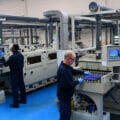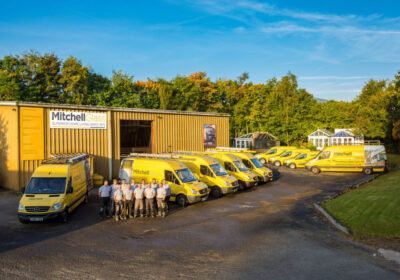When considering the potential consequences of inadequate tank farm monitoring, images of disasters like the Buncefield fire probably spring to mind first. However, with the development of safety regulations and equipment, these catastrophic events are becoming far less common over time. Instead, those who rely on functional tank farms as part of their supply chains are more likely to suffer from inefficiency and resultant financial setbacks. Here, Ian Loudon, international sales manager at remote monitoring specialist Omniflex, explains why tank monitoring is not just essential, but simple too.
Without accurate information, businesspeople are in the dark. Keeping track of supply levels in tank facilities is crucial both to regulate your incoming materials and provide the required product quantities on demand. This is as true for hazardous chemicals and flammable petroleum storage as it is for paint and water. But how can decision-makers access that critical data?
In parts of the developing world, a calibrated dipstick and cross-referencing table or a sight glass and internal floats are still used to determine levels inside each tank. Across farms with tens or even hundreds of tanks, this is slow, expensive and involves an inherent lag in data reporting. Furthermore, this brings no safety oversight for tank levels.
In more technologically equipped regions, advanced methods like remote monitoring have been used for many years. Here, tank farms will use whatever infrastructure is available to transmit information to a central collection point, whether a physical facility or cloud-based storage. This might be done by wired internet connection if it exists on-site, if not then mobile networks or even satellite-based communication.
The major challenge exists not in transmitting the data, but in gathering it in the first place. In chemical or petrochemical settings, this collection process is often costly because of the expensive instrumentation required to assess the tank levels in hazardous environments. The measurement equipment often represents up to 80 per cent of the overall project costs to implement remote monitoring at tank farms.
Although these costs can raise eyebrows, perspective is key. The ramifications, both financial and safety-related, of missing an overflowing tank can be severe. Forcing an emergency shutdown can lead to days and even weeks of expensive downtime in production. Research from the Aberdeen group showed that unplanned downtime at refineries and petrochemical plants costs between $10 thousand and $250 thousand per hour. Serious environmental damage like petroleum fires or chemical pollution is also a frightening consequence.
When Dulux engaged Omniflex to help provide direct access to vendors in the management of bulk chemical supply and on-site storage, the world-leading paint brand had complex, monitoring-based needs. The company wanted to monitor the tank levels of various paint ingredients stored onsite, such as the pigment, binder and additives. This site consisted of 76 tanks with various contents and Dulux’s procurement team shared this cloud based data with its 23 different vendors, who are located around the globe, to improve the logistics and resupply timelines.
To meet these needs, Omniflex provided a solution based around its Data2Desktop® service. All the data described was made available to Dulux’s vendors using conventional internet browsers, anywhere in the world. Dulux and its vendors can monitor the tank status to stay abreast of chemical supply and usage trends.
In the case of Dulux’s tank farms, it already had technology that pumped the bulk material chemical components into the mixing tank in the correct quantities, so the initial instrumentation costs were avoided. Omniflex’s remote monitoring solutions ‘bolted on’ to the existing measurement instrumentation, saving on engineering and installation costs, and so Dulux management personnel could determine the amount of each ingredient they needed to procure.
Although the installation costs for tank monitoring are not insignificant, the cost/benefit relationship easily justifies the expenditure. Those who could benefit from this remote data collection are asking the wrong question. Instead of saying “Can I afford to implement this technology,” they should be asking “Can I afford not to?”.
To find out how Omniflex can help update your tank monitoring practices, visit https://www.omniflex.com/support.php.






